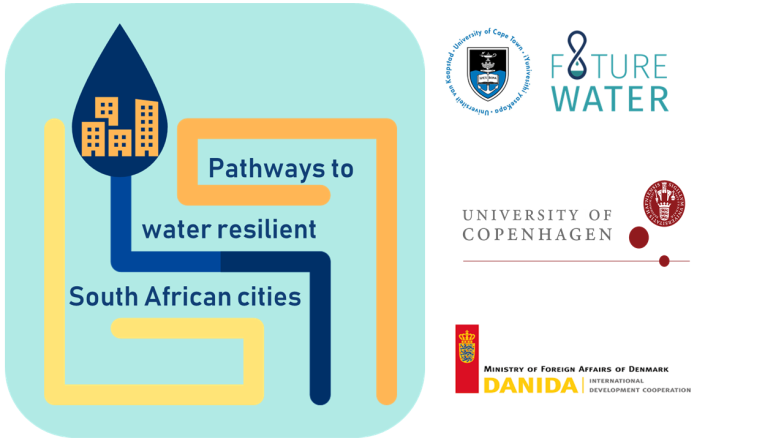The Pathways to water resilient South African cities or PaWS is a collaboration between UCT's Future Water research institute, and the University of Copenhagen, funded by Danida MFA. Cape Town has been used as a case study for the potential for harvesting stormwater using existing, well-established flood attenuation infrastructure, adapted with nature-based solutions (including green infrastructure / Water Sensitive Design (WSD) options). In Johannesburg, other opportunities for integrating a suite of nature-based solutions that are starting to emerge as a consequence of policy such as the Stormwater Design Manual will be examined. The project will provide important knowledge for a possible future study on upscaling WSD to other cities in South Africa. PaWS project has just completed, phase 2 (PaWS2) has begun. Click here for PaWS project outputs.

The overall objective is to identify opportunities for, and generate knowledge on, the physical and institutional integration of decentralised nature-based solutions into the urban water cycle to support and accelerate a transition towards water resilience in South African cities. The experimental has addressed in two inter-related work package (WP) streams: WP1 on physical experimentation with and evaluation of WSD options at different urban scales; and WP2 on exploring governance processes for enabling the emergent transitions.

The following research questions have been posed to meet the overall objective:
1. What is the potential for repurposing existing flood control infrastructure (stormwater ponds) in Cape Town to allow for the harvesting and treatment of contaminated surface runoff through managed aquifer recharge and recovery at basin/settlement scale?
2. How effective are the WSD (including Sustainable Drainage Systems, SuDS) elements that are being implemented in private developments in Johannesburg in response to the recently-promulgated Stormwater by-law, and what are the benefits that accrue from this approach?
3. What are the roles, coalitions and responsibilities of different actors in the implementation, operation and management of water sensitive urban design in the two cities?
4. What does an enabling governance environment for increased water resilience entail and how can it be supported?
5. What are different pathways for physical and institutional integration of nature-based solutions into the urban water cycle and urban water governance?
